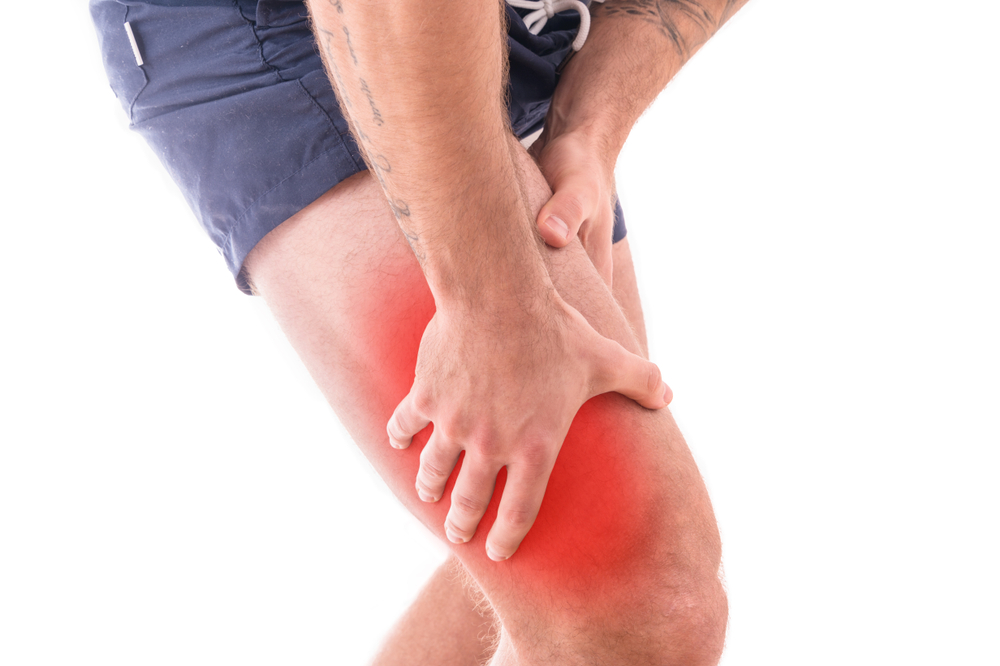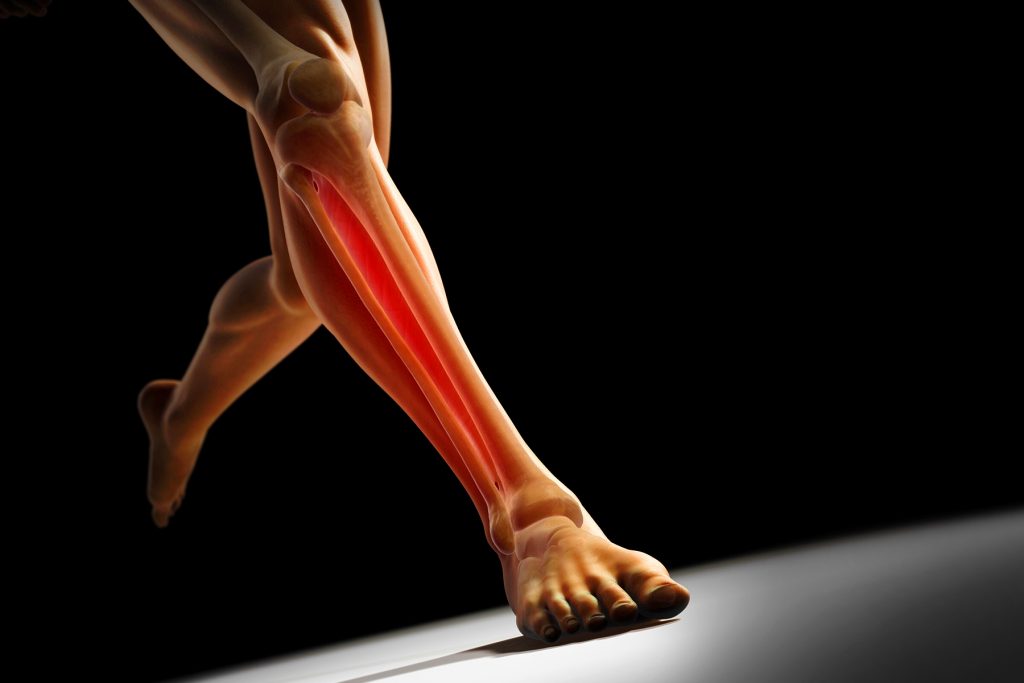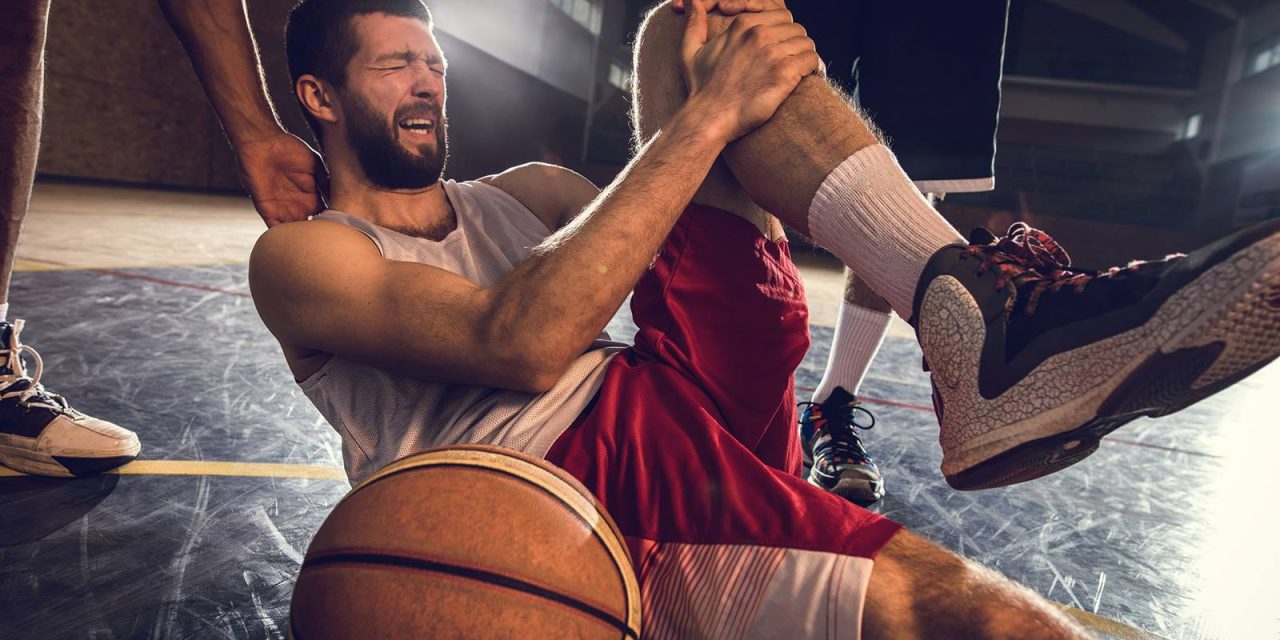It is almost inevitable that athletes will pick up injuries at some point in their careers. Whether it’s because of a beating they took in the boxing ring or a lunge for a tackle that made a player overstretch and pull a muscle, they appear frequently throughout the various sports we enjoy watching or taking part in.
Today, we’re going to take a look at some of the most common injuries that occur in sports, how they occur and what symptoms they can show. Because not all injuries leave bumps and bruises. Many can lead to internal damage we can’t see like a player who bangs their head and ends up with a concussion.
So let’s take a quick look at what the most common sports injuries among athletes are:
5 most common sports injuries
Sprains
Sprains are the most common injury in sports, caused by overstretching or tearing of ligaments (tissues that connect bones to each other). They can occur in various joints, such as the ankle, wrist, and knee, and are common in sports like basketball, football, and tennis. Symptoms include pain, swelling, and difficulty moving the affected joint. Treatment includes rest, ice, compression, and physical therapy.
Strains
Strains occur when there is a tear in a muscle or tendon (tissues that connect muscles to bones). They can be caused by overuse, overstretching, or sudden forceful movements. Common strains in sports include hamstring and groin strains, which are common in sports like rugby, football, and running. Symptoms include pain, muscle spasms, and difficulty using the affected muscle. Treatment includes rest, ice, compression, and physical therapy.

Knee injuries
Knee injuries are common in sports that involve sudden changes in direction, jumping, and landings, such as basketball, football, and rugby. Common knee injuries include ACL (anterior cruciate ligament) tears, MCL (medial collateral ligament) tears, and meniscus tears. Symptoms include knee pain, swelling, and instability. Treatment depends on the severity of the injury but may include physical therapy, surgery, and/or knee braces.
Concussions
Concussions are a type of traumatic brain injury caused by a blow to the head or a sudden jolt to the body. They are common in contact sports such as football, hockey, and boxing. Symptoms can include headache, nausea, dizziness, confusion, and memory loss. Treatment for a concussion involves rest and avoiding activities that could worsen symptoms until a full recovery is made. In severe cases, further medical attention may be required.
Overuse injuries
Overuse injuries are caused by repetitive motions and stress to a certain part of the body, without sufficient rest or recovery time. Common overuse injuries in sports include tennis elbow, runner’s knee, and stress fractures. Symptoms include pain, swelling, and difficulty using the affected body part. Treatment for overuse injuries includes rest, physical therapy, and modifying activities to reduce stress on the affected body part.

What can you do to avoid sports injuries?
Sports injuries can be painful and debilitating, but there are steps you can take to reduce your risk of injury:
- Warm up properly: Before participating in any physical activity, make sure to warm up properly. This can include light cardio, stretching, and dynamic movements specific to the sport you’re participating in.
- Strengthen your muscles: Building strong, flexible muscles can help reduce the risk of injury. Incorporate resistance training and functional exercises into your workout routine.
- Wear appropriate gear: Make sure to wear gear that is appropriate for your sport. This can include shoes, shin guards, helmets, and protective gear.
- Stay hydrated: Proper hydration is important for overall health and performance. Drink plenty of water before, during, and after physical activity.
- Get enough rest: Overtraining can increase the risk of injury. Make sure to give your body enough time to recover by getting adequate rest and sleep.
- Gradually increase intensity: If you’re starting a new sport or increasing the intensity of your training, do so gradually. Sudden increases in intensity can increase the risk of injury.
- Practice good technique: Good technique can help reduce the risk of injury. Make sure to learn and practice proper techniques for your sport, and seek advice from a coach or trainer if necessary.
- Listen to your body: If you experience pain or discomfort during physical activity, stop and rest. Continuing to play through the pain can increase the risk of injury.
By taking these precautions and following a well-rounded fitness routine, you can reduce your risk of sports injury and stay healthy and active. However, it is important to seek medical attention if you experience any symptoms of injury, such as pain, swelling, or difficulty moving.
Conclusion
In conclusion, these are the five most common sports injuries, and proper prevention and treatment methods can vary greatly based on the injury and individual. It’s essential to take the necessary precautions, such as stretching and wearing the appropriate gear, to minimise the risk of injury while participating in sports. Additionally, if you suspect an injury, seeking prompt medical attention can help ensure a faster and complete recovery.
For even more content like this, check out our General section.






Trackbacks/Pingbacks